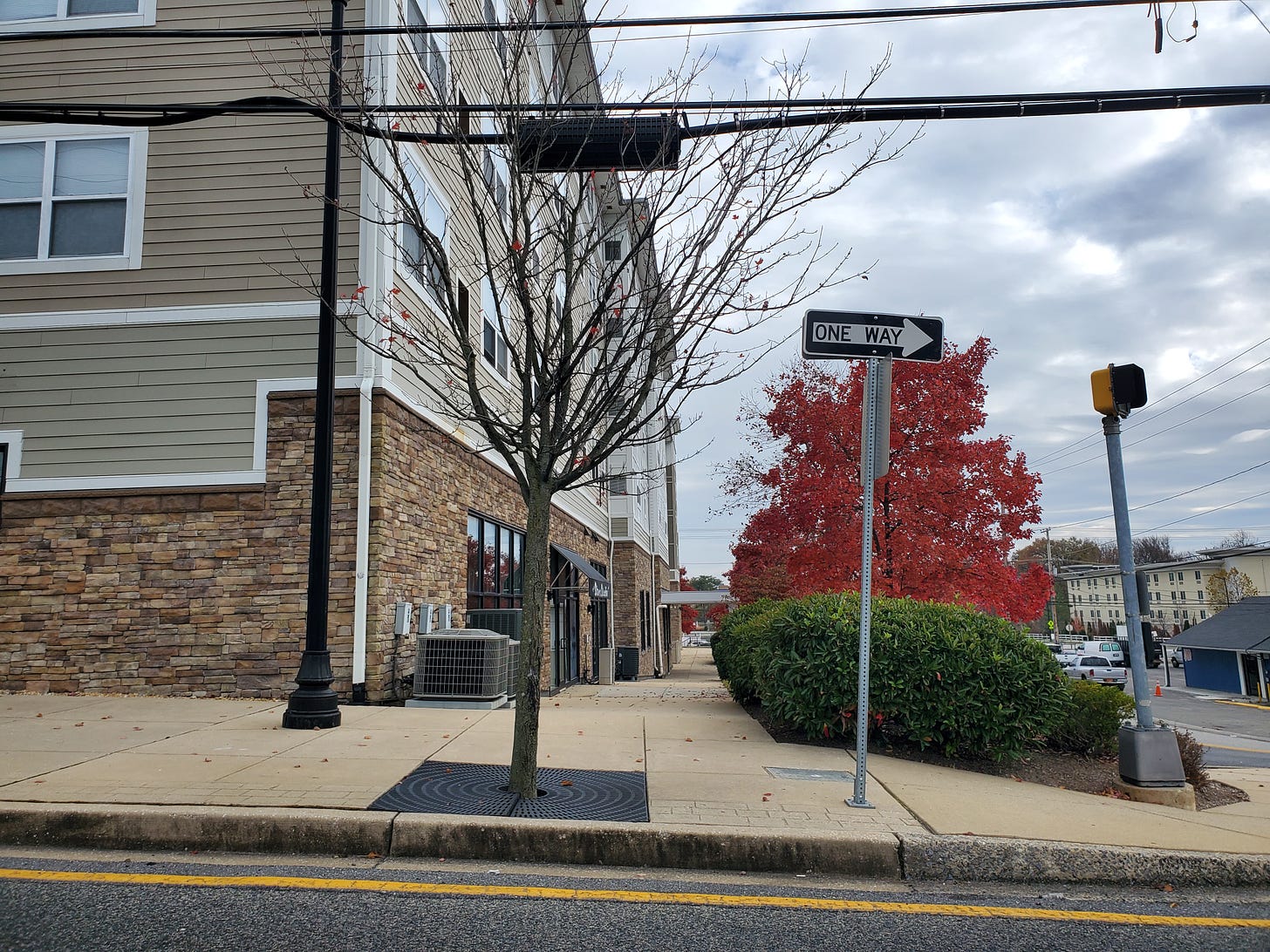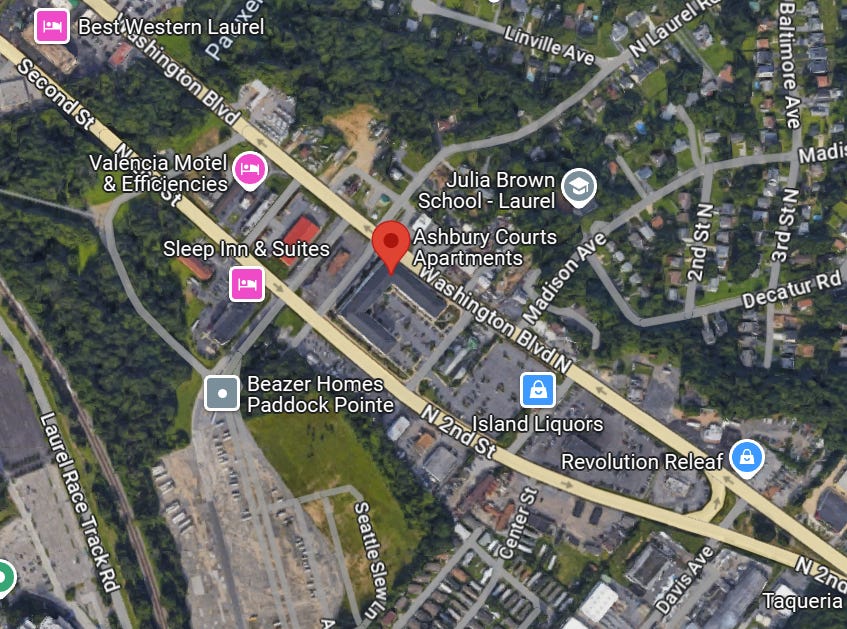To Govern, Govern Well, Voyagers-Log, Peter Banks, November 10, 2024
I’ve lived in Chicago and California, and almost without fail, when I tell someone from out of state where I lived, I’m met with questions about crime and homelessness. San Francisco has become a literal symbol of international dysfunction at this point. To the extent that Gavin Newsom “joked” about having to clean it up for Xi, much like you would “clean up your room for a guest”[not a literal quote].
This article probes a point I’ve seen a few other folks make, and it’s kind of lateral to all the election-politics punditry about issues and ad spending and whether the Democrats need to go on right-ish podcasts or make their own or whatever. It’s that in some sense the election was a referendum on Democratic mismanagement of Democrats’ own turf—blue states, and especially the big cities. Here, and here, are two other pieces on this.
Give this a read and see what you think.
Where should new multi-family housing go?, CommonWealth Beacon, Amy Dain, January 5, 2023
That question in the headline makes me think of this picture I took the other day:
That multifamily building on the left is here, placed between the north- and south-bound lanes of U.S. 1, in Laurel, Maryland.
From the piece, which is about Massachusetts but basically applies everywhere:
For many communities, preserving the status quo of existing neighborhoods has been an explicit priority, even as the housing crunch has intensified. A few years ago, the city of Weymouth rezoned a commercial corridor for mixed-use multifamily housing, drawing the zoning district surgically to avoid development near existing residential neighborhoods. Wellesley’s 2018 Draft Unified Plan explains that participants in public meetings saw commercial, office, and industrial areas as the most acceptable locations for multifamily housing; not residential districts. In fact, my review of local master plans across 100 cities and towns showed no movement to upzone residential neighborhoods, other than by allowing accessory dwelling units (also called in-law apartments), which appear to have relatively popular support.
There really is an idea—maybe not even an idea, but a (wrong) understanding—that multifamily housing isn’t really residential. It’s really hard not to see something of an ideology in the notion of single-family zoning.
Also this:
If we write off as unchangeable all residential neighborhoods adjacent to these great hubs, then we make it harder to achieve the combined goals of an abundance of housing and sustainable, equitable settlement patterns. There is much demand in Greater Boston for “missing middle” housing that fits between single family-houses-with-yards and bigger apartment/condo complexes. For development of smaller scale multifamily housing to serve many people and make a difference in the market, it has to be allowed in more places.
The stock response to this from NIMBYs is “nice to want.” Think about how there’s no other product or service where people who want a thing to be produced and can afford it are seen as being too demanding, or undeserving, or whatever. In every other context, the customer is always right. In the context of housing, the customer is an entitled spoiled brat. Unless he buys a house in a tightly zoned neighborhood.
Read the whole thing.
An Old Building Should Get A Birthday Present, Strong Towns, Daniel Herriges, August 24, 2020
The vast majority of the settlements inhabited 2,000 years ago no longer exist, even as ruins or a name on a map. However, think of the 2,000-year-old (and older) cities that are on the map today. Does anyone really doubt that in another two millennia, if there is human civilization at all, that a prime example of it will be found on seven hills framing the banks of the Tiber River not far from its mouth at the Tyrrhenian Sea? Or that there's a good chance that city will still be called Rome, in some variant at least?
Think smaller. Think of the corner of the world you spend your days in. What in the place you live has staying power? Will your great-great grandchildren know your own neighborhood by the name you know it? Will they know any of its landmarks? How do you know?
This is some old-school Strong Towns stuff—thinking of our towns and cities as evolved rather than created or designed per se, almost as living things. Here’s the point, which is true and could be made of so many beloved places that the rules have artificially locked up in some way:
Who deserves a tax abatement or TIF or economic development grant? The builder of a new entertainment district or Costco-anchored commercial plaza or stadium or casino? Or the person who wants to rehab a faded downtown landmark? Who is more likely to actually get it?
Maybe an old building should get a birthday present from City Hall the year it turns 100. As a token of thanks for a century of contribution to making a place for the ages, cut its taxes and let the owner use the savings to finally get rid of that asbestos or replace the roof or restore the marble portico damaged by acid rain. The things that will help a building that has proven its worth keep giving back for the next 100 years.
My own adjacent idea: demolished buildings should get a funeral.
Sony Music goes back to vinyl records, BBC, June 29, 2017
The firm will resume in-house domestic vinyl production at a Japanese factory south-west of Tokyo by March 2018.
The move comes amid renewed demand for old-fashioned black plastic records, which now occupy a key market niche.
So that was then—how is the vinyl revival doing? Up every single year since 2006, all the way through to 2023, the last full year of data. I’ve always thought this was really cool—numbers like that have to be more than just an aesthetic fad, right? I like to think the appeal of tactility and ritual are real and go beyond just records. Also, is there any other example of a near-extinct technology coming back like this in a sustained manner? I find it really cool.
Related Reading:
Thank you for reading! Please consider upgrading to a paid subscription to help support this newsletter. You’ll get a weekly subscribers-only piece, plus full access to the archive: over 1,100 pieces and growing. And you’ll help ensure more like this!






One issue is that we treat homes as investments, and as such an investment must always go up in value, and to use monopolistic practices to protect values (zoning) in addition to opposing redevelopment and construction of new housing. Secondly, there seems to be a desire to treat our neighborhoods as a museum rather than as a living organism. Lastly, there is a desire to keep out individuals deemed as “undesirable” and prices are one way to do that.
Also, I find the phrase “single family character” to be oxymoronic, as neighborhoods with swaths of nothing but single family homes completely lack anything that brings character.
"There really is an idea—maybe not even an idea, but a (wrong) understanding—that multifamily housing isn’t really residential. It’s really hard not to see something of an ideology in the notion of single-family zoning."
You should read Brave New Home by Diana Lind.
https://www.amazon.com/Brave-New-Home-Smarter-Simpler/dp/1541742664
Another book, which I am re-reading now because I did not understand it the first time, is At Home in the City by Betsy Klimasmith. It's a dense work of literary criticism, but I am finding it helpful the second time around.
https://archive.org/details/athomeincityurba0000klim/page/240/mode/2up